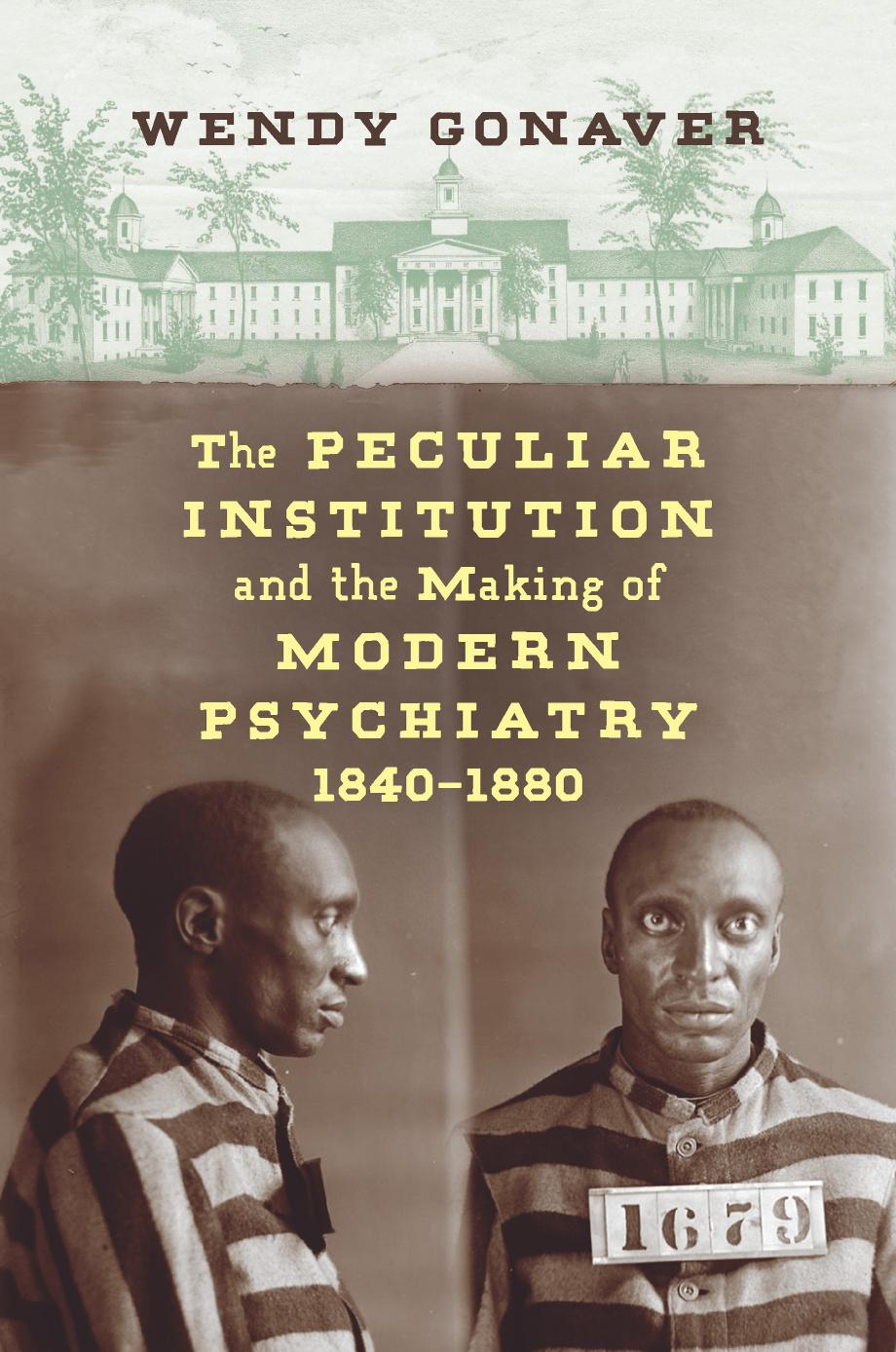The Peculiar Institution and the Making of Modern Psychiatry, 1840â1880 by Wendy Gonaver

Author:Wendy Gonaver
Language: eng
Format: epub, pdf
Publisher: The University of North Carolina Press
CHAPTER FIVE
So Different
The Asylum and the Civil War
The disposition, temper and habits of the colored race are so different from those of the white and the management of the two classes so dissimilar, that it would be impossible to keep and successfully treat them in the same institution.
âHunter McGuire, president of the board of Central Lunatic Asylum in 18701
The Civil War affected everyone connected to the Eastern Lunatic Asylum and ultimately led to the creation of separate institutions for black and white patients. After having been administered by members of the Galt family since the late eighteenth century, responsibility for running the asylum fell to a series of appointees, many of whom had few prior ties to Williamsburg. The authority to appoint the superintendent passed from the Union Army to the recently defeated Confederate-sympathizing Virginia legislature, which gave way to the briefly constituted Reconstruction-era Virginia legislature that operated under martial law and in cooperation with the Freedmenâs Bureau. The turnover, particularly during the unpredictable years before the end of the war, posed unique challenges for enslaved staff, whose status remained uncertain even after President Lincoln issued the Emancipation Proclamation. For patients, administrative chaos and wartime exigencies led to a diminished quality of life. The end of the war brought some stability, but the quality of care worsened for black patients. The end of slavery and subsequent passage of the fourteenth and fifteenth amendments to the U.S. Constitution were joyfully celebrated by the black community outside the asylum walls, but institutionalized inmates were not affected because, as before, they were not legally entitled to the liberties of ordinary citizens. Black patients, including some who had been at the Eastern Lunatic Asylum for decades, were not even permitted to remain in Williamsburg. In 1869, they were transferred to a segregated facility outside of Richmond initially under the auspices of the Freedmenâs Bureau. The void created by Galtâs death had created an opening for his professional adversaries, those colleagues who had never approved of his experiments with integrated and outpatient care, to influence the postwar reconstruction of the asylum. Yet in implementing their vision of proper management, Northern reformers and their Southern allies actually hastened the end of moral therapy for African American patients. The Eastern Lunatic Asylum, which under John M. Galt might have offered a model for Reconstruction governments to emulate, instead became an obscure and inconsequential institution.
Eastern Lunatic Asylum during the Civil War (1862â1865)
John M. Galtâs suicide presented an immediate challenge for Union forces occupying Williamsburg. General George B. McClellan appointed Dr. W. Clinton Thompson of Indiana to temporarily act as asylum superintendent.2 Virginia Governor John Letcher in Richmond initially took a sanguine view of this arrangement. Letcher had been narrowly elected in 1859 on a moderate platform, but he ultimately supported the Confederacy. With permission from General McClellan and wearing a blindfold as he crossed military lines, a state representative at the behest of Governor Letcher assessed the occupied asylum. Content that the patients were in fine condition, and
Download
The Peculiar Institution and the Making of Modern Psychiatry, 1840â1880 by Wendy Gonaver.pdf
This site does not store any files on its server. We only index and link to content provided by other sites. Please contact the content providers to delete copyright contents if any and email us, we'll remove relevant links or contents immediately.
| Administration & Medicine Economics | Allied Health Professions |
| Basic Sciences | Dentistry |
| History | Medical Informatics |
| Medicine | Nursing |
| Pharmacology | Psychology |
| Research | Veterinary Medicine |
The Immortal Life of Henrietta Lacks by Rebecca Skloot(4525)
An American Plague by Jim Murphy(3710)
The Emperor of All Maladies: A Biography of Cancer by Siddhartha Mukherjee(3064)
The Gene: An Intimate History by Siddhartha Mukherjee(3047)
The Fate of Rome: Climate, Disease, and the End of an Empire (The Princeton History of the Ancient World) by Kyle Harper(3003)
Rebecca Skloot by The Immortal Life of Henrietta Lacks(1978)
Stiff - The Curious Lives of Human Cadavers by Mary Roach(1813)
The Great Influenza by John M Barry(1750)
The Vaccine Race by Meredith Wadman(1627)
Undue Risk by Moreno Jonathan D.;(1600)
Hero by Michael Grant(1584)
Three Cups of Tea by Greg Mortenson(1576)
The Mystery of the Exploding Teeth by Thomas Morris(1539)
Quackery by Lydia Kang(1519)
Autism's False Prophets by Paul A. Offit(1495)
Extremes: Life, Death and the Limits of the Human Body by Fong Kevin(1483)
A Journal of the Plague Year (Oxford World's Classics) by Daniel Defoe(1480)
Steroids: History, Science, and Issues by Standora Joan E.; Bogomolnik Alex; Slugocki Malgorzata(1479)
The Vaccine Court by Rohde Wayne(1469)
